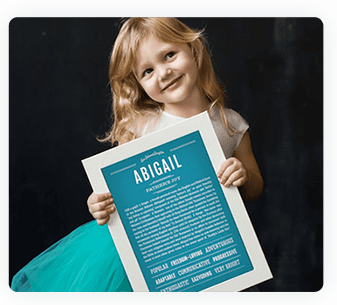Literary Characters
OF THE BABY NAME PETER
Peter Pan is the immortal “forever-boy” creation of Scottish writer J.M. Barrie. His main appearance was in the 1904 play, Peter Pan, or the Boy Who Would Not Grow Up. Since then he has made his indelible mark on our hearts through countless books, cartoons, stage adaptations, movies, toys, etc. By turns selfishly cocky and generously helpful, Peter is a link between the vagaries of childhood and the necessarily more stable environs of adulthood. He appeals to our sense of imagination, magic and everlasting fun, while at the same time he “warns” us of the fleeting nature of life itself and the need to accept the responsibilities that come with it.
Peter is the oldest of the four Pevensie children who find their way into the magical kingdom of Narnia, in C. S. Lewis’ timeless The Chronicles of Narnia, first introduced in the 1950’s, most notably in The Lion, The Witch and The Wardrobe. Becoming wartime wards of Professor Kirke, the children (led by Lucy) find their way into the Kingdom of Narnia through the wardrobe door. Peter is an upright young boy who always tries to do the right and brave thing, even when he is in doubt about the veracity of his sister Lucy’s account of the new world she has encountered. Once in Narnia himself, Peter adapts immediately and deports himself responsibly and courageously throughout all their fantastic adventures, eventually becoming High King Peter the Magnificent, and fearlessly battling the forces of evil.
Peter Rabbit is the delightfully humanized hero of the many Beatrix Potter stories, first appearing in 1902 in The Tale of Peter Rabbit. Along with his sisters, Flopsy, Mopsy and Cotton-tail, Peter lives in a people-like-furnished rabbit hole and has various adventures, such as sneaking into Mr. McGregor’s vegetable garden and availing himself of the bounty. Mischievous but well-meaning, Peter has been beloved of children and parents alike for over 100 years, and has been the inspiration for innumerable stories, TV series, movies, toys, dolls and artifacts.
Peter Keating is the antithesis of the hero, Howard Roark, in the Ayn Rand 1943 bestseller, The Fountainhead. Facile and quick, he is able to succeed based not upon his devotion to artistic principle, but on his ability to deliver what pleases others. Indeed, these attributes earn him success, a prestigious partnership, a socially prominent wife, and – you guessed it – a membership in the “I Sold Out Club”. Needless to say, he reaps the rewards of his folly and falls ignominiously from grace. (Nice ride while it lasted, though.)
Wendy Darling is the oldest of the three Darling children in J. M. Barrie’s well-known, oft performed and beloved 1904 play, “Peter Pan, or The Boy Who Wouldn’t Grow Up”, as well as his 1911 novel, “Peter Pan and Wendy”. Wendy and her two younger brothers, John and Michael, live in London, where they are visited by the boy who never grew up, Peter Pan. Peter teaches them how to fly and leads them all across the night sky to Never Land. Wendy is a conventional, good little Edwardian girl who honors her parents and loves her little brothers, but she has an unfulfilled wish never to grow up, to remain a girl forever. Who better to befriend her than Peter, the forever boy? Peter introduces the Darling children to all the frights and delights of Never Land, and hopes to keep them (especially Wendy) there with him. Ironically, it is Wendy who finds her path to natural adulthood through these adventures, discovering that while it is to be cherished, childhood is also to be left behind in the natural order of things. Wendy mothers the Lost Boys of Never Land, and tends to them with loving care. It is obvious that she also harbors an innocent love for Peter. Ultimately, however, Wendy realizes the inevitability of maturing, growing and accepting responsibility, all the while maintaining a vestige of the magical powers of childhood. With a mixture of reluctance and anticipation, Wendy decides to return with her brothers to reality, to embrace what is to come but never to forget what has been.







